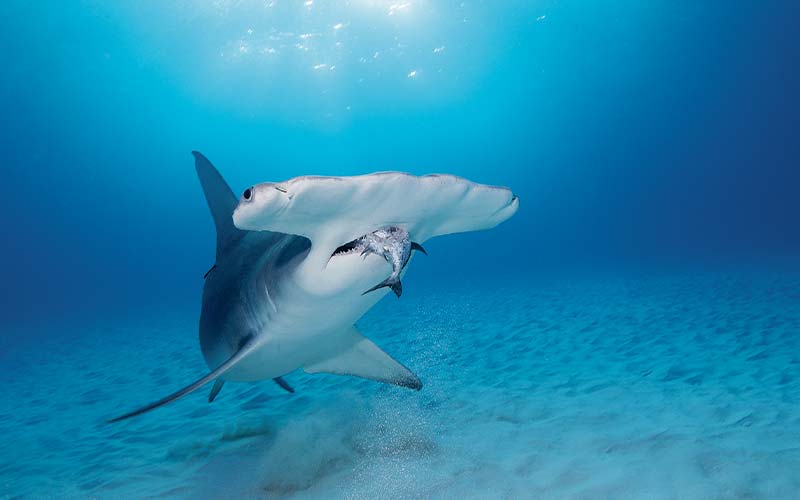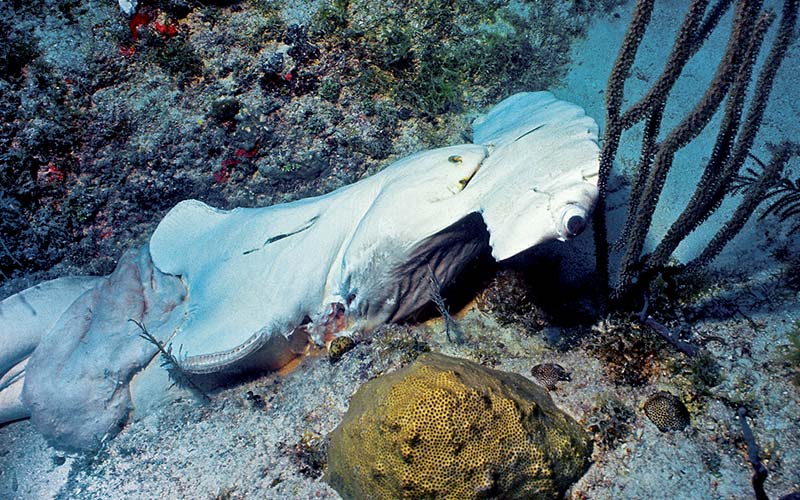The stakes were high at the Convention on International Trade in Endangered Species of Wild Fauna and Flora (CITES) meeting this spring. On the table were the fates of manta rays and five species of shark — animals heavily exploited for their gill plates and fins. The meeting was held in Bangkok in March, and marine conservationists worldwide were thrilled to witness the adoption of critical protections for these marine species.
CITES is an international agreement initiated in 1973; it currently has 178 member countries. The treaty features three appendices: Appendix I lists species for which commercial trade is prohibited (such as elephants, tigers and rhinoceroses); Appendix II lists species for which trade regulations and careful management are needed to ensure sustainability; and Appendix III lists species protected by at least one country that needs assistance from others to control trade. The sharks and mantas were added to Appendix II.
Threats from illegal poaching persist no matter which appendix a species is listed on, but CITES is considered one of the most effective and best-enforced international conservation agreements. Global trade is one of the greatest threats to shark and ray populations, and collective agreements reached through CITES can bring about change.
Susan Lieberman of the Pew Environment Group clarified the significance of the listing: “Adding a species to Appendix II does not stop the trade. Countries wanting to export listed animals must issue a permit and certify that their scientists believe the export is not harmful to the species. The importing country has an obligation to review the paperwork and certify that the aforementioned steps have been completed.”

An Unsustainable Harvest
According the United Nations Food and Agriculture Organization, humans kill up to 100 million sharks each year, mostly for fins that are consumed in China and Japan. In the past 100 years, 90 percent of the world’s sharks and other large predatory fishes have disappeared due to overfishing.
“Sharks are vital for healthy oceans,” Lieberman said. “They are the top predators, and when you take out the top predators the whole food web and ecosystem start to change and may eventually collapse.”
A study published by the University of British Columbia in May 2013 assessed the global value of shark ecotourism at more than $314 million (US$) per year and estimated that it will increase to $780 million in the next 20 years. In comparison, the annual value of the world’s shark fisheries is currently $630 million and has been in decline for the past decade.
The newly protected sharks are the oceanic whitetip, three species of hammerhead (great, smooth and scalloped) and the porbeagle, all of which are heavily overfished for the shark-fin soup market. All 178 CITES member nations — except any that file an official protest (“reservation”) — are required by treaty to enforce the new regulations.
“For commercial marine fish it has been difficult to get governments to look at the species that might become endangered — governments are reluctant because fisheries do not want to admit we are decimating our oceans,” Lieberman said.

Manta rays have only recently come to global attention as a species in peril. Lately, demand for their gill rakers to be used as medicine is on the rise, despite a total lack of empirical data demonstrating medicinal value or even a historical precedent for their use in traditional Chinese medicine. The recent demand seems to be the result of successful direct-to-consumer marketing efforts by suppliers. Mantas are being slaughtered for their gill rakers in such numbers that failure to effectively regulate the trade could jeopardize the future of the species.
“CITES’ support and the addition of these species to Appendix II brings protection to a new level,” said Georgienne Bradley, executive director of the Sea Save Foundation. “Momentum continues to grow at a grassroots level, but CITES will ensure global protection, and it is imperative that this happens in a timely manner.”
The proposals met with opposition (led by Japan and China) throughout the sessions, but ultimately a two-thirds majority (the contingent required to approve changes to Appendix I or II) voted the measures through. Bryan Arroyo, assistant director of international affairs for the U.S. Fish and Wildlife Service and lead delegate of the U.S. CITES team said, “We came in confident that we had the right kind of coalition of many countries throughout the world. We were cautiously optimistic, and we knew there was a lot of work behind it. Frankly, it was the science of all these proposals that truly carried the day.”
Ongoing Challenges
CITES member countries had until June 12, 2013, to file a reservation to exempt themselves from a particular resolution. The following countries registered reservations and intend not to abide by the regulation of trade in the species noted: Denmark, on behalf of Greenland (porbeagle sharks); Guyana (all five shark species and the manta rays); Japan (all five shark species); Iceland (porbeagle sharks); and Yemen (hammerhead sharks). Although China lobbied against the addition of sharks and rays to the CITES appendices, in the interest of international cooperation they did not file a reservation. This is a significant development: Although Japan’s shark-fin trade is substantial, China is the world’s largest market.

Michael Sutton, J.D., co-author of Ocean and Coastal Law and Policy and president of the California Fish and Game Commission, explained a possible maneuver that might encourage Japanese officials to reconsider: “Section 8 of the U.S. Fisherman’s Protective Act (also known as the Pelly Amendment) authorizes the president to embargo wildlife products from a foreign nation that ‘engages in trade that diminishes the effectiveness of an international program with respect to the United States for the conservation of endangered or threatened species.'”
Although CITES is only as strong as its member countries’ capabilities and will to enforce it, its rulings carry enough weight to allow application of international pressure. Marine conservation is a never-ending battle, but the CITES meeting in Bangkok this spring was a small victory and a big step in the right direction.
© Alert Diver — Q3 Summer 2013